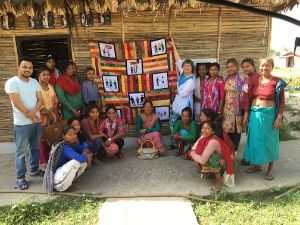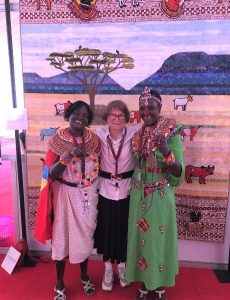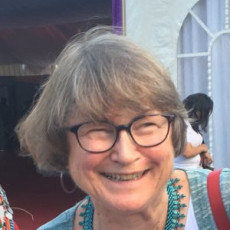So Much More Than a Blanket!
The most recent blog from Brigid, a current AP intern, about quilting has encouraged me to write another blog of my own on this subject so dear to my heart.
Quilting is so much more than making a cover to keep someone warm. When a person takes up needle and thread and fabric with the goal of making a quilt, so many things happen. Quilts can memorialize – a person, a place, an event. They can represent something happy, or sad or momentous. Quilts can tell a story – of love or loss, of new life and old memories. Quilts can allow the maker to create ideas that words may not allow. Over the centuries, quilting has been a way for women, in particular, to make their voices heard even when they were denied a voice. They can make the world stop ignoring a growing health crisis. They have been given to people suffering from horrific losses in natural disasters, giving them hope. Quilts have been given to wounded warriors as a thank you for their sacrifice and a recognition that they have not been forgotten. They are provided to families of newborns in the neo-natal units of local hospitals and have been given to children who have been taken into foster care. They have been provided as a way to brighten the lives of those living in homeless shelters.
Quilts have raised money for good causes, whether holding an auction to support survivors of gender based violence, or raffling a quilt in order to buy books for a school in Africa.
Quilts are also wonderful teaching tools. When I share my quilts with students, I always talk about perseverance (it can take a long time to make a quilt) and kindness and generosity. They’re always amazed when I tell them I don’t sell my quilts but I do give them away. I talk about problem-solving and cooperation. I even talk about history and mathematics and the Pythagorean Theorem!
Quilts have a way of bringing people together. Of comforting. And even of helping to heal some very deep wounds. There is a therapeutic effect for the maker in crafting a simple design and sharing the story with others.
I have assembled quilts for the Advocacy Project for eight years, and have had the pleasure and honor of working directly with our partners in Nepal and Kenya to create quilts reflecting their lives and struggles. I just wish I could fully convey what these projects have meant to me and to the women who have come together to raise their needles and their voices. The power of quilts lies in the stories they tell and the people behind them. I hope everyone is listening to them!

Family members who lost loved ones in the disappearances in Nepal, came together to create this memorial quilt which will help them as they lobby the government for justice.

Salaiton Lenguris and Joyce Leriro are two of the artists who created beadwork for the Kenya Cow Quilt. This project brought together women from two tribes to work collaboratively to create the motifs and self-portraits on this quilt.
Posted By Barbara Fitzsimmons
Posted Aug 5th, 2020


2 Comments
Iain Guest
August 6, 2020
Such a nice blog! We are so lucky to have you in the group, Bobbi. Not only have you helped us to assemble some wonderful quilts, through the years, you’ve reminded us that quilters are a special breed. I never pass a quilt by now, without wondering who made it and what impact it had on the quilt-maker. We never expected this when we started the program in 2007 – instead, we expected it all to be about the message and the partner. You’ve helped us to view quilts as products of cooperation and collaboration between artists from very different backgrounds but with a common goal. Thank you!
Alexandra Mayer
August 6, 2020
Your words and experiences, along with these photos are beautiful. It’s incredible what meaning a quilt can have… but I guess the act of quilting is a vessel for communication and strengthening/garnering community. Beyond survival, those might be the two most important things in life. At least, they’re up there for me personally.